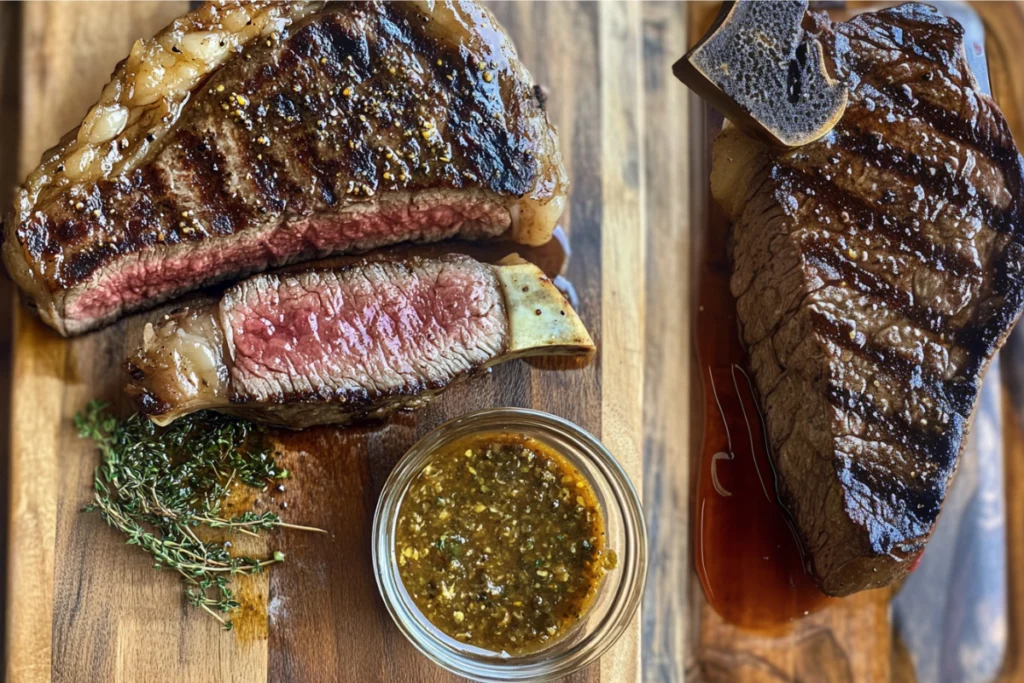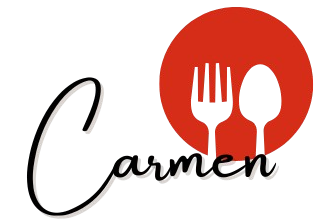
Cowboy butter is a rich, flavorful condiment that has become a favorite among grill enthusiasts and home cooks. This buttery spread, infused with aromatic garlic, herbs, and a touch of spice, pairs perfectly with a wide range of dishes. Cowboy butter’s appeal lies in its versatility, as it can be used as a dipping sauce, a spread, or even a finishing touch on grilled meats and vegetables. If you’re looking to add bold flavors to your meals, cowboy butter is a must-try.
In this guide, we’ll dive deep into what makes cowboy butter so unique, breaking down its essential ingredients, ways to make and use it, popular variations, and storage tips. By the end, you’ll understand why this sauce has gained such a strong following and how you can experiment to create your perfect version.
The Origins and Appeal of Cowboy Butter
The exact origin of cowboy butter is somewhat of a mystery, though it’s become especially popular in recent years as a versatile condiment. Made with a base of butter, cowboy butter incorporates zesty, garlicky, and herbaceous flavors. This unique flavor profile makes it an ideal accompaniment to meats and grilled foods, enhancing their natural taste without overpowering it. Cowboy butter offers an easy way to elevate a meal, making it a favorite for those who enjoy cooking outdoors or want a restaurant-quality condiment at home.
Allrecipes describes cowboy butter as a blend of rich butter with vibrant flavors from mustard, garlic, and herbs, ideal for anyone who loves to experiment with flavors. Additionally, Taste of Home highlights its versatility and how it can be tailored to suit individual preferences, whether you prefer it spicier, zestier, or even milder.
Curious about other flavorful condiments that complement meats? Discover the Ultimate Guide to Meatloaf Sauces for more ideas on enhancing your meals.
Essential Ingredients in Cowboy Butter
The beauty of cowboy butter lies in its simplicity and the harmony between a few core ingredients. Here’s what typically goes into a classic cowboy butter recipe:
Core Ingredients
- Butter: The main ingredient, lending a creamy and rich texture. High-quality butter adds a smooth, indulgent base to this spread.
- Garlic: Known for its aromatic, sharp, and slightly spicy profile, garlic brings boldness to cowboy butter.
- Fresh Herbs: Parsley, chives, and thyme are common choices, adding a layer of earthy, fresh flavor.
- Lemon Juice and Zest: A touch of lemon juice brightens up the sauce, adding acidity and balancing the richness of the butter.
- Dijon Mustard: This gives cowboy butter a mild, tangy kick, deepening its flavor and enhancing the other ingredients.
- Paprika: Adds a hint of smokiness and color, along with a mild heat. Smoked paprika can be used for a richer flavor.
Optional Ingredients for Customization
For those who enjoy experimenting with flavors, cowboy butter can be customized with various additional ingredients:
- Chili Flakes or Cayenne Pepper: Add heat for a spicier cowboy butter.
- Worcestershire Sauce: Adds a layer of umami for a more savory flavor.
- Honey: A hint of sweetness can balance the acidity and spice.
- Lime Zest or Orange Zest: For a citrusy twist that brings more depth.
These ingredients are often used to adjust the flavor profile to personal preference, making cowboy butter a great choice for creative cooks.
How to Make Cowboy Butter
Creating cowboy butter is straightforward and only takes a few minutes, yet the result is a deliciously complex spread. Here’s a step-by-step guide:
- Gather Your Ingredients: Ensure you have softened butter, finely minced garlic, freshly chopped herbs, lemon juice, and all desired seasonings.
- Combine Ingredients: In a medium bowl, mix the softened butter with garlic, herbs, lemon juice, mustard, and any additional seasonings you want to include.
- Blend Until Smooth: Use a fork or a spoon to blend the ingredients until the butter is smooth and everything is well incorporated.
- Taste and Adjust: Sample a small amount and adjust the flavor to taste. Add more garlic or lemon juice for a stronger flavor or more herbs for freshness.
- Serve or Store: Cowboy butter can be used immediately or stored in an airtight container in the refrigerator for later use.
To further explore variations and techniques, check out how to thicken dipping sauces to get the perfect consistency for different applications.
Different Ways to Use Cowboy Butter
Cowboy butter’s versatility makes it an excellent choice for a wide range of dishes. Here are some popular ways to enjoy this delicious condiment:
1. As a Sauce for Grilled Meats
Cowboy butter is most famously used as a finishing sauce for steaks, chicken, and seafood. When the warm butter melts over the freshly grilled meat, it coats it with flavor and enhances its juiciness. It’s also an ideal way to add moisture and a burst of flavor to lean cuts.
2. As a Dipping Sauce
Serve cowboy butter as a dip for crusty bread, grilled vegetables, or fries. Its rich, savory profile complements bread perfectly, making it a popular choice as a party dip or a snack.
3. As a Spread for Sandwiches and Burgers
Cowboy butter can elevate sandwiches and burgers, acting as a flavorful spread that adds depth to every bite. Try using it on burgers for a unique twist or spreading it on a sandwich with turkey or ham.
4. For Breakfast Dishes
A dollop of cowboy butter on scrambled eggs or as a spread on toast can add a new dimension to breakfast. It’s a simple yet effective way to add flavor to your morning routine.
If you’re interested in exploring other spreads for different meals, consider garlic parmesan sauce for more creamy and flavorful ideas.
Nutritional Profile of Cowboy Butter
Since cowboy butter is mainly composed of butter, it’s a calorie-dense condiment. Here’s a breakdown of the nutritional components:
Caloric and Macronutrient Information
- Calories: Roughly 100-120 calories per tablespoon.
- Fat Content: High in saturated fats due to the butter base, which also contributes to the rich flavor.
- Protein and Carbs: Minimal protein and carbohydrates.
Possible Health Benefits
The herbs and garlic in cowboy butter offer some nutritional benefits, including antioxidants from parsley and potential anti-inflammatory effects from garlic. However, due to its high fat content, cowboy butter should be used in moderation for those monitoring calorie or fat intake.
For a lighter version, you can substitute regular butter with a reduced-fat version or add more herbs and spices to dilute the butter’s density without sacrificing flavor.
Popular Cowboy Butter Variations
One of the biggest advantages of cowboy butter is how easily it can be customized to suit different tastes. Here are some common variations:
1. Spicy Cowboy Butter
Add more chili flakes or a dash of hot sauce for extra heat. This version is ideal for those who enjoy a kick of spice in their food, and it works well as a dip for bread or roasted vegetables.
2. Herb-Focused Cowboy Butter
Increase the quantity and variety of herbs. Add fresh rosemary, oregano, or basil for an herb-forward cowboy butter that pairs wonderfully with poultry or seafood.
3. Citrus Cowboy Butter
Incorporate extra citrus zest, such as lime or orange, for a fresh, tangy twist. Citrus flavors can lighten the richness of the butter and make it feel more refreshing, which is especially nice with grilled fish or chicken.
4. Smoky Cowboy Butter
Using smoked paprika or even a drop of liquid smoke can bring a bold, smoky flavor to the butter, perfect for adding depth to grilled or smoked meats.
These variations allow you to adjust the flavor profile of cowboy butter to better match the dishes you’re preparing, making it a versatile choice for all types of meals.
How to Store Cowboy Butter
Proper storage is essential for keeping cowboy butter fresh and flavorful. Here are some guidelines to follow:
Refrigeration
Store cowboy butter in an airtight container in the refrigerator. When properly sealed, it will stay fresh for up to two weeks. Be sure to use clean utensils each time to avoid introducing bacteria.
Freezing
For longer storage, divide the butter into small portions, wrap tightly, and freeze. Frozen cowboy butter can last for up to three months. When you’re ready to use it, thaw in the refrigerator for a few hours.
If you’re interested in more tips for storing homemade condiments, check out how long homemade dips last to ensure freshness and quality.
Cowboy Butter vs. Compound Butter
While cowboy butter is technically a type of compound butter, it has unique characteristics that set it apart. Traditional compound butters are typically made by mixing herbs and spices into butter for a simple yet flavorful spread. Cowboy butter, however, tends to have a more complex flavor profile, thanks to the inclusion of ingredients like Dijon mustard and lemon juice, which add a tangy and bold twist.
Key Differences at a Glance
| Cowboy Butter | Compound Butter |
|---|---|
| Includes mustard and lemon | Focuses mainly on herbs and spices |
| Bold, tangy, and slightly spicy flavor | Subtle, straightforward flavors |
| Ideal for dipping and grilling | Used mainly as a topping for baked dishes |
Cowboy butter offers a more dynamic flavor, making it suitable for robust meats, while traditional compound butter is often used to complement subtler flavors in dishes like baked fish or vegetables.
Frequently Asked Questions (FAQ)
What is cowboy butter made of?
Cowboy butter is a blend of butter, garlic, herbs, lemon juice, Dijon mustard, and seasonings like paprika and chili flakes.
What does cowboy butter taste like?
Cowboy butter has a garlicky, tangy, and slightly spicy flavor with hints of fresh herbs and a buttery richness.
Can you make cowboy butter vegan or dairy-free?
Yes, you can substitute plant-based butter and add nutritional yeast for a robust flavor.
How long can cowboy butter be stored?
It lasts about two weeks in the fridge and up to three months if frozen.
Is cowboy butter spicy?
It has a mild heat level, which can be increased by adding more chili flakes or cayenne pepper.
Conclusion
Cowboy butter is an adaptable, delicious condiment that can elevate nearly any meal. With its combination of butter, herbs, and seasonings, cowboy butter brings a burst of flavor to meats, vegetables, and more. Whether you prefer it spicy, tangy, or heavy on the herbs, cowboy butter is easy to customize and a joy to experiment with in the kitchen.
